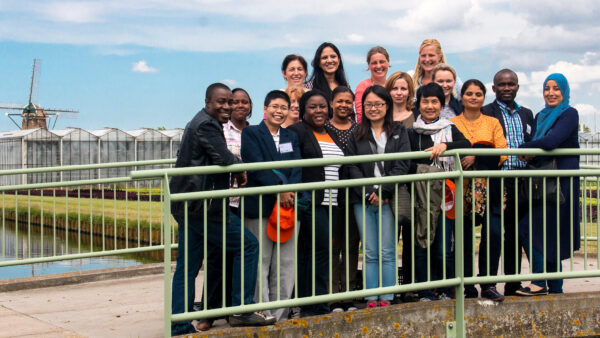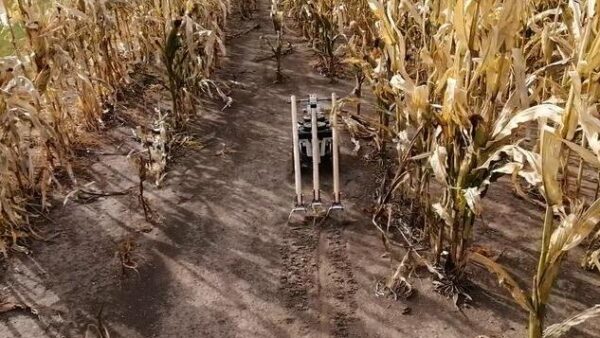Innovation is the driving force behind the seed sector. Companies that fail to invest in research and development are bound to end up at the tail end of the market very quickly. The European Seed Association estimates investment in R&D at 15 per cent of the turnover on average, whereas some companies manage to invest up to 30 per cent. A lot of innovation thus stems from company investment.
However, we shouldn’t think we can do it all on our own. Governments are important for creating an environment that stimulates investment in research, and to maintain a knowledge infrastructure that trains the next generation of bright in-company innovators who come up with breakthrough innovations. Innovation policies, therefore, play a crucial role in the development of a vibrant seed sector.
Innovation policies may consist of several components; the most important relate to tax incentives, support for public research and the protection of intellectual property. Much has been written about the latter, and a brief summary may suffice here: plant breeders’ rights, their efficient procedures and effective enforcement—complemented by patent, trademark and trade secret systems that are well aligned and balanced with breeder’s rights —are crucial for an innovative seed sector.
With regard to tax incentives, a wide array of opportunities exist. Countries may have zero or reduced company tax levels for income derived from breeders’ rights or other intellectual property. Others may make investments in R&D infrastructure and/or expenses for staff involved in R&D tax deductible. Such measures are very relevant to our sector, even though research managers sometimes complain they may not have a final say in the use of amounts thus saved.
The third component warrants extra attention. Despite enormous investments in R&D by private companies, the public research infrastructure has proven to be a critical aspect to the success of the commercial seed sector. Various models exist in different countries.
With regard to breeding in the public sector, the United States and the Netherlands may be extremes. The United States has a history of plant breeding in the public sector, spearheaded by the navy collecting potentially useful materials worldwide in the 19th century, and testing and adapting those materials to U.S. conditions at land grant universities. Even now—though the trend is fast declining in recent years—variety development of most crops is still taking place at universities. Private breeding concentrates on some major field crops and vegetables.
On the other hand, in Europe, plant breeding in the 19th century started in the private sector. The names of initial seed entrepreneurs still persist in today’s seed business, such as Vilmorin, Desprez and Groot. Following that history, the public sector in the Netherlands has explicitly avoided developing varieties in the public sector when private breeders are present. Instead, the public sector concentrates on supporting private breeding through upstream breeding research.
For example, in the early 1980s, carnation breeding was virtually dead because there was little to improve on the big red, pink and white varieties. When the Institute for Horticultural Plant Breeding, through interspecific crosses, developed innovative multi-floral carnations with a wide diversity of colours, it was not allowed to release finished varieties, since some flower breeders were eager to step into this new range of products. The half-bred material was given to these breeders, and they developed a thriving carnation breeding industry once again. This strict arrangement was, to a large extent, the result of excellent cooperation between the public and private sectors, with representation of the private sector on the boards of public institutes. Actual plant breeding at Wageningen University is done on apples, pears and ‘new’ field crops, such as quinoa and Crambe only.
Currently, public-private collaboration is the standard for research policies in the Netherlands and, increasingly, European Union policies as well. Public-private projects are excellent in applied and, what the EU calls, industrial research. However, some negative consequences have been observed already. Where private contributions to projects amount to 50 per cent, as is the case with industrial research in the Netherlands (for applied research it is 80 per cent private), research institutions face problems maintaining critical mass in certain disciplines, especially those most relevant to farmers and small enterprises. These institutions find it hard to bring together sufficient funds for projects on, for example, plant tissue culture.
This problem is much less pronounced in France, where the National Institute for Agricultural Research still has basic government funding of 80 per cent. Policies towards public-private cooperation may also go too far. The Netherlands is now also promoting private co-funding in fundamental research. There is a serious risk that this will pull down fundamental research funding to the more applied topics, disregarding the starting point of the innovation pipeline: fundamental research based on the curiosity and creativity of top-level scientists.
We continue to need blue-sky ideas as the basis of breakthrough innovations. Plant breeding is, by definition, a science based on the combined efforts of plant science, agronomy and genetics. We have benefited greatly from ideas derived from mathematics (statistical breeding methods), organic chemistry (molecular biology) and information technology (bioinformatics). We don’t know which scientific discipline will provide the next positive disruption that revolutionises plant breeding. Such blue-sky developments will likely not come from breeding companies, so we need to nurture universities where ‘crazy’ ideas are allowed to be pursued.
Such universities will also produce the best creative minds that will further develop our industry. If we, as the commercial seed sector, could determine the programmes at universities, I fear we would weed out the ‘craziest’ scientists as unproductive. Our conclusion here is that public-private collaboration is excellent as a leading principle in innovation policies, but it should not be taken too far.
Finally, there is another component of innovation influenced by policies: whether or not we can actually use our plant breeding innovations. A case in point is the current worldwide debate on whether or not the products of precision breeding methods need to be regulated. However, in most countries, the debate is not about innovation, but about risks, ethics and power. It is not part of the innovation policies, which is one of the main reasons why it takes so long to get clarity in many countries about gene-editing methods, cisgenesis and other breeding methods. It is high time the innovation principle is put on equal footing with the precautionary principle in this discussion.
Research policies are a very important part of government involvement in the seed sector and, thus, an essential focus of lobbying by seed associations. At Plantum, we continually try to illustrate the benefits of plant breeding for society in terms of our contribution to sustainable crop production and to product qualities for consumers and industry.
However, when it comes to involving the general public, it is difficult to explain the need for public support for continued innovation in plant sciences. How do you explain the promise of precision breeding to people who have no clue what plant breeding is—heredity is not part of biology curricula at secondary schools anymore, even now that we celebrate the 150th anniversary of the publication of Mendel’s laws. We at Plantum, spend quite a lot of energy on innovation policies in the Netherlands, yielding both successes and frustrations.
Editor’s Note: Niels Louwaars is the managing director of Plantum and also highly active on several boards in the seed and agriculture industry.













